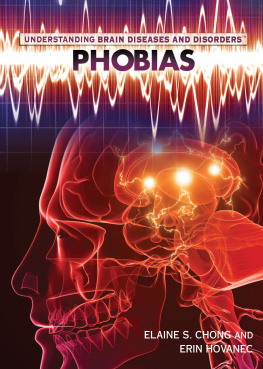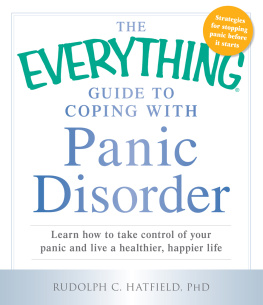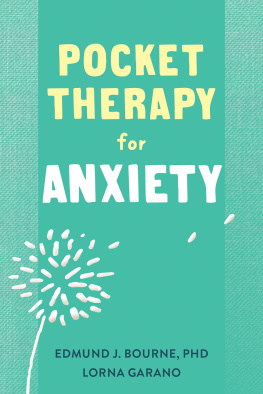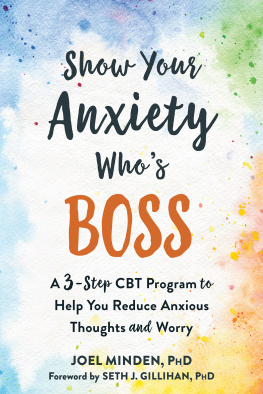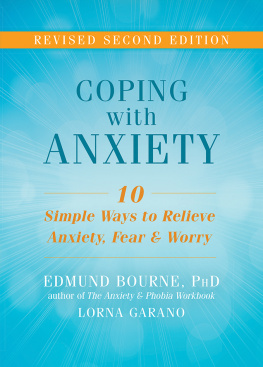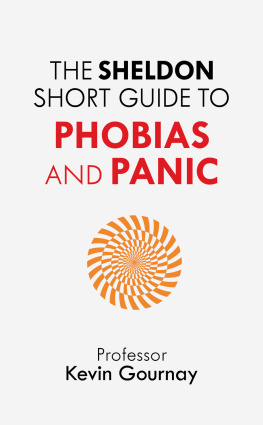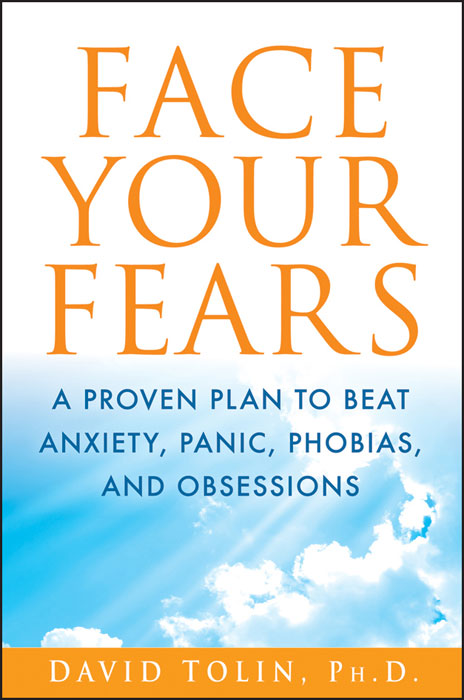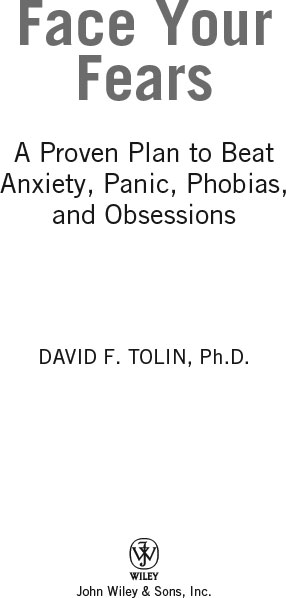Copyright 2012 by David F. Tolin, Ph.D. All rights reserved
Published by John Wiley & Sons, Inc., Hoboken, New Jersey
Published simultaneously in Canada
Design by Forty-Five Degree Design LLC
No part of this publication may be reproduced, stored in a retrieval system, or transmitted in any form or by any means, electronic, mechanical, photocopying, recording, scanning, or otherwise, except as permitted under Section 107 or 108 of the 1976 United States Copyright Act, without either the prior written permission of the Publisher, or authorization through payment of the appropriate per-copy fee to the Copyright Clearance Center, 222 Rosewood Drive, Danvers, MA 01923, (978) 750-8400, fax (978) 646-8600, or on the web at www.copyright.com . Requests to the Publisher for permission should be addressed to the Permissions Department, John Wiley & Sons, Inc., 111 River Street, Hoboken, NJ 07030, (201) 748-6011, fax (201) 748-6008, or online at http://www.wiley.com/go/permissions .
The information contained in this book is not intended to serve as a replacement for professional medical advice. Any use of the information in this book is at the readers discretion. The author and the publisher specifically disclaim any and all liability arising directly or indirectly from the use or application of any information contained in this book. A health care professional should be consulted regarding your specific situation.
For general information about our other products and services, please contact our Customer Care Department within the United States at (800) 762-2974, outside the United States at (317) 572-3993 or fax (317) 572-4002.
Wiley also publishes its books in a variety of electronic formats and by print-on-demand. Some content that appears in standard print versions of this book may not be available in other formats. For more information about Wiley products, visit us at www.wiley.com .
ISBN 978-1-118-01673-2 (cloth); ISBN 978-1-118-14623-1 (ebk.);
ISBN 978-1-118-14624-8 (ebk.); ISBN 978-1-118-14625-5 (ebk.)
This book is for Fiona, James, and Katie.
Acknowledgments
This book was created with the help and support of all of my colleagues at the Institute of Livings Anxiety Disorders Center. My sincere thanks to my graduate students Janine Domingues, Kristin Slyne, and Andrea Umbach, as well as my literary agent Jill Marsal, who provided important comments and insights on earlier drafts of this book. And of course, I want to thank all of the patients who have taught me about anxiety disorders, particularly the seven who were kind enough to lend their stories to this book.
PART I
The Face Your Fears Program to Beat Anxiety
Faces of Fear
He who fears something gives it power over him.
Moorish proverb
Its fitting that as I write the opening sentences to a book about fear, I am sitting on a commercial airplane, somewhere over the Midwestern United States, flying through severe turbulence. As the plane lurches and bounces through the dark skies, its engines whining (okay, maybe thats my interpretation of what they are doing), I am aware that my palms have become moist and clammy with perspiration. Putting a hand to my chest, I feel my heart beating faster. My breathing has become more rapid and shallow, my muscles tense. I find that I am paying much more attention than usual to the sounds of the airplane, waiting for any unexpected noises that might signal impending disaster. I am thinking about airplane crashes I have read about in the news and considering the possibility that my plane might be next. I even notice that I am white-knuckle gripping the armrests, as if to somehow hold the plane up in the sky.
Yup, even doctors who study and treat fear experience fear. In fact, we all do. In this case, my fear didnt get the better of meI was able to deal with it and eventually feel better, rather than panickingbut the experience certainly got me thinking about fear. Most of the time, when we experience fear, its not a big deal (and, in fact, it can be quite helpful in the right context). Yet when fear escalates out of control, the impact can be devastating. Over one-quarter of Americans either have or will have an anxiety disorder, such as panic disorder, specific or social phobias, obsessive-compulsive disorder, generalized anxiety disorder , or posttraumatic stress disorder significantly more than the number of people who suffer from depression, substance abuse, or other mental health conditions. These anxiety disorders can have a very serious effect on someones quality of life, as evidenced by countless stories of marital and financial problems, impaired social relationships, problems at work or attending school, and so on. People with anxiety disorders are suffering, often quite badly.
Fortunately, help is available. Having worked with hundreds of patients during the last two decades and having conducted federally supported research on the treatment of anxiety disorders, I can teach you skills to help you beat your fears. One crucial finding from my research and that of many, many colleagues is that exposure therapy directly and gradually confronting feared objects, activities, and situationsis the key to overcoming most forms of fear.
Lots of books have been written about mastering anxiety. Some of them are good; others are not so good. Perhaps youve seen them and even tried one (or more). This book is different. Why? Everything in it is backed by hard science showing that these methods work. I wont send you off to do things that I cant prove are helpful. This book will give you what works and only what works. No fluff. No BS. This book will provide you with a clear, user-friendly program that makes exposure therapy accessible to everyone, from mildly fearful individuals to people who are debilitated by their fears and anxieties.
If youre like most people reading this book, you are bothered by fears that seem as if they are out of control (or starting to get out of control). Perhaps your fears are so intense that they severely affect your quality of life. In my clinic, Ive met countless people who told me that their fears were diminishing their ability to work, to perform in school, to have social lives, or to maintain good relationships with family members. If you find that fear has affected your ability to live a happy and healthy life, the program in this book will get you back on track toward the life you want and deserve.
That might not be your story, however. Although the people in my clinic tend to represent the more severe end of the continuum, countless others sufferoften privatelyfrom fears that dont necessarily affect their ability to function but are bothersome, nevertheless. These people might simply feel nervous and afraid a lot of the time or find themselves becoming irritable or run down. Even though they can function just fine, they simply dont like the way they feel and wish things could be better. If youre closer to this end of the continuum, read onthis book is for you, too, and can help you feel much better.
There are lots of ways to divide fears into categories. Mental health professionals use the diagnoses listed in the Diagnostic and Statistical Manual of Mental Disorders , 4th edition, Text Revision ( DSM-IV-TR ), published by the American Psychiatric Association. If youve talked to a health-care professional about your fear, you might have heard things like Your condition is called a specific phobia, or You have OCD. These are DSM-IV-TR diagnoses.


